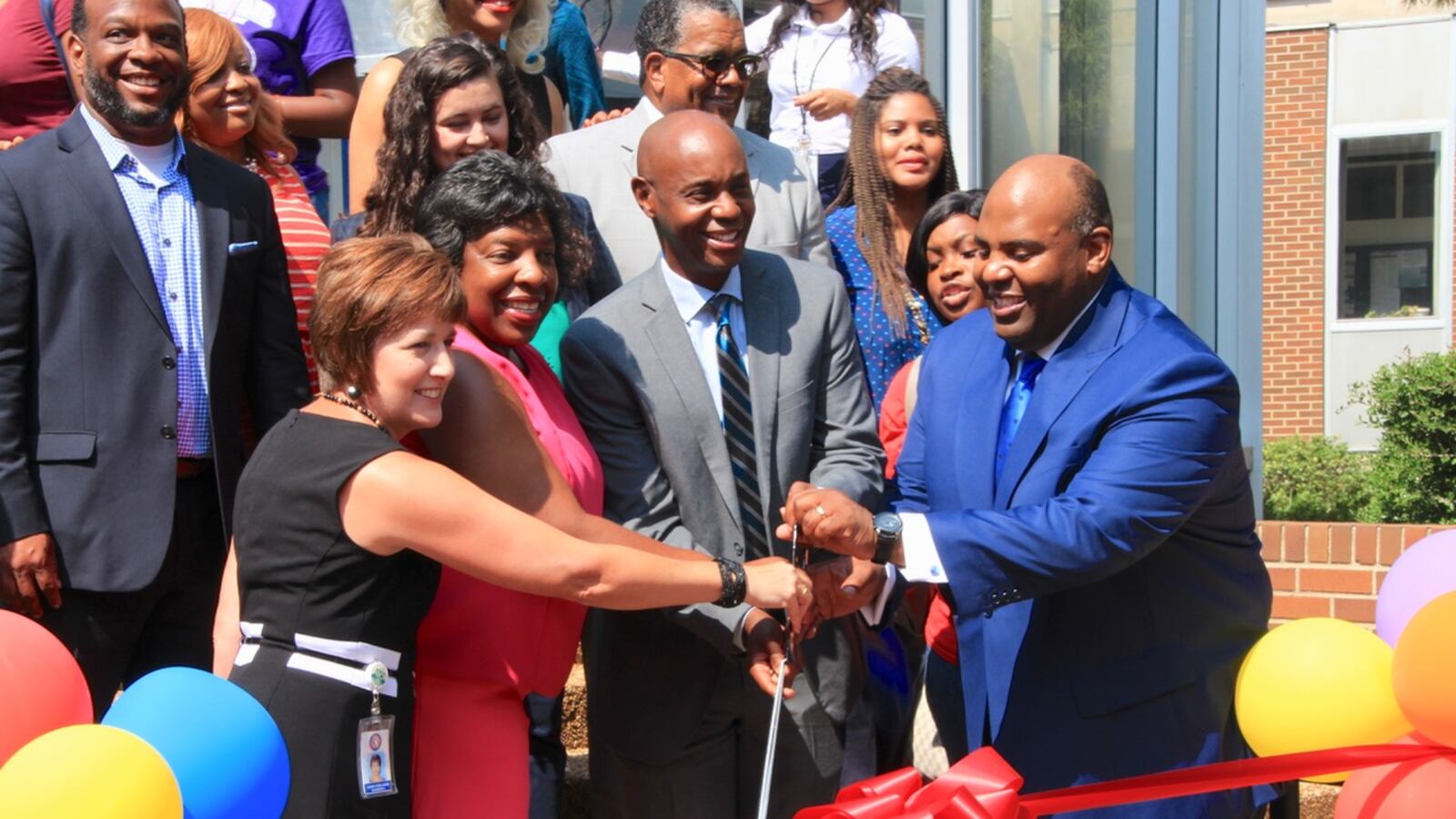Memphis school teachers could get a 3 percent raise for a second straight year under a proposed spending plan touted as “investing more in people than in programs.”
Superintendent Dorsey Hopson on Monday unveiled a $945 million spending plan for next school year that avoids the layoffs and cuts that have dominated recent budgets for Shelby County Schools.
Instead, Tennessee’s largest district plans to invest in new resources to support its classrooms by adding 18 instructional coaches, 35 school counselors, 11 assistant principals, and 20 interventionists for literacy and math. Each teacher would get $50 more each year to buy classroom supplies, on top of the $100 they already receive.
The district also is earmarking $5.9 million to pay for interventions at 11 struggling schools and to provide retention bonuses for their teachers.
It’s all part of nearly $50 million in academic additions proposed for next school year — a flip from last year when the district made $50 million in cuts. To help cover the investments, $18 million would come from the district’s general fund balance, which now stands at $110 million.
The proposed budget for 2017-18 is 2 percent lower than this year’s, due partly to another year of declining enrollment. But it’s the first year since the 2013 merger of Memphis and Shelby County schools that the district has kicked off its budget season without a shortfall.
Despite the anticipated drop in students, no teacher layoffs are planned. Instead, excess teachers will be moved to fill vacancies elsewhere. “We’ll have a place for all of our teachers,” Hopson said during a conference call with news reporters.
The budget was presented to school board members with messages about both good news and bad.
The good news: Shelby County Schools will continue to benefit from the boost in local education funding approved last year by the Shelby County Board of Commissioners, which holds the purse strings for school funding.
The bad news, Hopson said, is that the district is still “woefully underfunding by the state,” a claim supported by a recent Rutgers study and the basis for the district’s ongoing funding lawsuit against the state.
Chief Financial Officer Lin Johnson also warned that the district’s newfound stability could be rocked if the state legislature passes a tuition voucher law. One bill specifically aimed at Memphis could cost Shelby County Schools about $18 million annually.
“It is a significant amount that jeopardizes us doing more in terms of academic intervention, academic improvement, and improving more emotional and social support for our kids,” Johnson told board members.
The budget, which takes effect July 1, is built on the assumption that vouchers will be approved and that 1,000 students would take advantage of them at a cost of $8.6 million. If the bill fails, Hopson said board members could redirect that money to more school supports.
Proposals to invest in supports that reach classrooms drew praise from school board members. Stephanie Love cited increased staffing to support students’ social and emotional needs, while board Chairman Chris Caldwell welcomed the chance to invest proactively.
Meanwhile, former chairwoman Teresa Jones urged district administrators to be transparent about exactly where the investments will go.
“I think we’re headed in the right direction,” Jones said. “I realize we have a lot of ground to make up. And it’s the first year since I’ve been on the board we’ve been able to try to make investments — real investments — district-wide. I’m pleased for that.”
Exactly how the $10.5 million in teacher raises would be rolled out is still under discussion. The district is in negotiations with the county’s two teachers unions. Last year, Hopson pushed for merit-based raises, but eventually extended them across the board after technical and logistical problems with the state’s new TNReady test delayed teacher evaluation data to the district.
The budget aligns with Hopson’s initiative announced last month to work with principals to transform 11 schools struggling with academic, enrollment or building maintenance problems. The effort pulls components from the Innovation Zone, the district’s school turnaround program, to help improve schools in crisis.
“What we hear year in and year out is we need help in schools,” Hopson said. “We were really thoughtful about coming up with a budget that shows significant and sustainable investments in schools.”
Below is the administration’s budget presentation to school board members.

